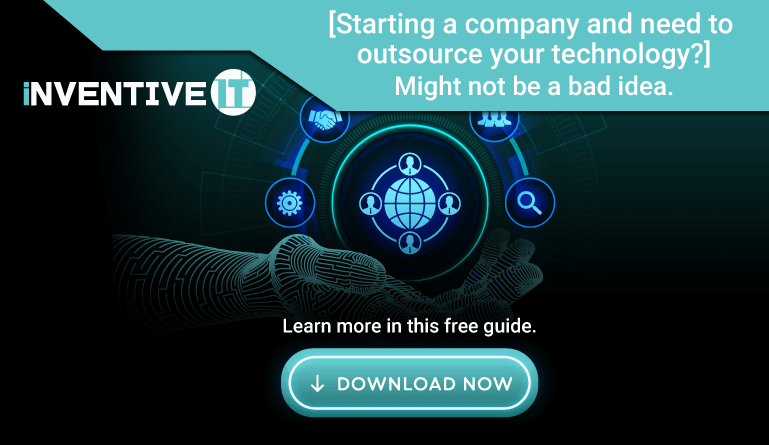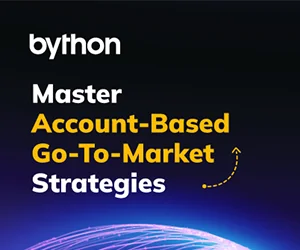API Banking can be defined as a set of protocols, routines, or tools that enables accessibility to a bank’s services to other financial infrastructures or third-party institutions.
API helps to automate functions that a business would normally execute on a banking portal from within the internal ERP or product. These functions could include the transfer of funds and add of beneficiaries.
How API Banking Works?
Banks will typically give restricted and secured access to their central banking system for other third-party institutions. This is to give them access to data and to also carry out banking functions such as balance queries, transactions, checking account information, etc.
How it works:
- The banking institution opens its core banking system for the third-party platform.
- The third-party platform will then integrate the bank APIs. This is done in order to establish a connection with the bank’s central banking system.
- Thereafter, the third-party platform will request to fetch the required data from the bank servers or carry out functions. This is called API calls.
The function of the third-party platforms is to provide a comfortable interface. This will enable carrying out API Banking functions for transactions and other business use cases.
By doing this, business organizations and other financial service providers can conveniently integrate single third-party APIs to gain access to numerous banking APIs.
The key examples of banking APIs include analytics, account authentication, account information, payment processing, and loyalty programs.
3 Types of APIs
Currently, there are three categorizations of APIs. Each of these models offers an insight into better innovative solutions.
-
Private APIs
This model of API is most often used within the default banking organization. A large proportion of banks consider private APIs as very important. This is because private APIs help to improve the operational efficiency of the banks. Below are the benefits of this model of API:
- Cost savings through automation
- It allows for improved collaborations
- It gives greater security in data exchange
-
Partner APIs
In almost every situation, this model of API is employed in the activities between a certain third-party partner and a bank. Partner APIs support expansion. This is usually experienced with respect to new channels, products, etc.
Take for instance, with the utilization of a partner API, a bank can interact with a separate third-party organization. They can work together to automatically develop loan documents with respect to loan applications.
By implication, this would consequently enable the bank to maximize efficiency rates and automate loans. This is why a large number of banks will change from private to partner APIs over a period of time.
Below are the benefits of this API model:
- It gives more efficient collaborations
- It enables the monetization of the API
- It also gives greater security in data exchange
-
Public APIs
This is to a reasonable extent, the least commonly used model of API. The structure of public or open APIs(1) is to make business data available to third parties. Here, the banks are usually bothered about data security and other vital customer information. Below are the benefits of this model of API:
- Innovation through external partners
- The building of the developer community
- It allows access to new markets
4 Limitations to Integrate Directly with Banks
-
Difficult Integrations
This is a major challenge that will be faced when you decide to integrate directly with banks. This is simply because bank APIs are usually written with SOAP protocol. This SOAP protocol is often complex to integrate.
This, therefore, results in reduced flexibility around sending data. The process could take about 6 months or more on average to get started.
-
Limited TPS
Bank servers have a specific limited number of transactions per second (TPS) which they can process. Hence, in the possible scenario where a large organization intends to process more than the fixed transactions per second, all of such transactions will definitely fail.
-
Difficult Reconciliation
In the event of terminated or canceled transactions, it requires a lot of effort to identify and reconcile them. This is large because various banks and several payment options usually have differing reporting formats, as well as types of issues.
-
Single Bank a/c Dependency
As a result of the fact that integration consumes more time for a single account, a lot of businesses tend to find it difficult to use any other bank account. Thus, when certain bank servers are unresponsive, there would be no plan B method to carry out transactions.
6 Integrations with API Banking Platform
-
More than bank transfers
When you integrate with API banking platforms, you can utilize them to carry out payouts to any other bank account. In fact, you can transfer money to any UPI-BHIM ID, PayTM wallet, or debit card.
-
Verify before you pay
One of the features of third-party API platforms is that they have a Bank Account Verification feature. With this feature, you can validate the exactness of the bank account number and bank account holder name prior to sending funds in real-time.
-
Built for scale, works 24×7
A lot of third-party banking APIs operate on a 24/7 basis. This simply means you are enabled to process up to 100,000 payouts every day. With third-party banking API platforms, your money would move even if banks do not move.
-
Easy to integrate
A number of third-party API Banking platforms are based on developer-friendly API software. This means that you can easily integrate with your app, website, or ERP and transfer money automatically. It would take only a few hours for your payouts to be integrated.
-
Simpler file uploads than banks
Using API Banking platforms allows you to progress beyond the issues of file upload errors. Thanks to the easy to navigate dashboard, bulk payouts have been made quite easy today.
-
Higher Success Rate
It is not new that certain bank servers may be unresponsive at times. However, since API banking platforms are integrated with several banks. This means they can reroute the transactions through different banks. All they need to do is utilize their brilliant algorithms if any provision bank server is not responding appropriately.
( Also Read: Risks and Benefits of Open Banking )
Benefits of Using an API Gateway in Your Microservices
-
Prevents exposing internal concerns to external clients
One of the foremost benefits of API gateway to microservices is that it distinguishes external public APIs from internal microservice APIs. The advantage of this is that it, therefore, allows for microservices to be included and restrictions changed.
Consequently, this will lead to the ability to reconsider and right-size microservices as time passes by. It is even more advantageous since there would be no negative impacts on externally-bound clients.
In addition, this also helps to conceal service discovery and versioning details from the client. This is done through the provision of a single point of entry for all of the client’s microservices.
-
Adds an additional layer of security to your microservices
API gateways are useful in the prevention of malicious attacks. This is because they help to provide an extra layer of protection from attack mechanisms such as Distributed Denial of Service (DDoS), XML Parser exploits, and SQL Injection among others.
-
Enables support for mixing communication protocols
Typically, external-facing APIs usually offer an HTTP or REST-based API. However, internal microservices stand the gain from the advantage of using several communication protocols.
These protocols may consist of AMQP, ProtoBuf, or even system integration with XML-RPC, SOAP, JSON-RPC etc.
An API gateway can provide an external, merged REST-based API across these different protocols. This will allow parties to select which protocols best suits the internal design.
-
Decreased microservice complexity
There are certain issues that are peculiar to microservices. These common issues include restricting, authorization using API tokens, and access control implementation.
Each of these issues can increase the time spent in the development of microservices by mandating that each service enforces them.
However, an API gateway will nullify these concerns from your code. This will enable your microservices to pay more concentration on the task at hand.
-
Microservice mocking and visualization
Through the separation of microservice APIs from the external API, it becomes possible for you to mock or virtualize your services. This will enable you to validate architectural conditions. It will also help in integration testing.
Challenges of API Banking
-
Deep customer apathy
The requirement for API Banking is involvement by customers who willingly concur to give permission to access their data. This is an important and necessary prerequisite for the progress of API Banking.
However, this has not proven to be very much successful. Statistics show that, on average, just 26% of customers all over the world are in support of the adoption of API banking. This figure is much higher in starting markets.
The reason for this can be attributed to two factors. The first factor is the issue of security and privacy of data. API Banking is still challenged with the issue of data security. This is why customers ate still resistant to adopting it.
Research has proven that the problem of data security and the fear of fraud is one of the top factors inhibiting the global adoption of API Banking.
The second factor is the customers’ demand for value. Research has also shown that a large percentage of customers are reluctant to participate in API Banking because they have not yet seen any evidence of tangible value in exchange for their trust.
-
A lack of customer awareness
A major factor hindering the complete adoption of API banking is insufficient customer awareness. API banking still needs to greatly educate and familiarize the customers with the whole idea of API.
The disinterest of customers can, in fact, stem from the failure of the banks to effectively interact and enlighten their customers about the modifications to banking terms and conditions that precede API banking.
-
Better entrenched competition
As banking institutions are leveraging on the opportunities of the digital era, they are faced with numerous non-bank forces. These forces include new pure-digital entities, fintech, large non-banks such as Amazon, and technology vendors.
Each of these forces has started to influence the rules of banking operations. They are creating a new banking atmosphere, forcing banks to react. All around the world, investments in fintech are experiencing a massive increase.
Statistics show that in 2010, the investments in fintech were below $2 billion. However, this figure has been forecasted to climb as high as $150 billion between 2019 and 2021. This simply signifies the confidence of the market in the ability of these forces to bring about significant changes.
It is pertinent to expound that tech-inclined non-bank competitors are drawing customers by giving unbundled financial services. The services are provided through innovative, captivating, and empowering tools.
By implication, banks that do not meet up with this challenge stand the risk of facing certain unwanted contingencies. These include eroded market share, pressure on margins, increased customer churn, etc. The most important threat here becomes the possibility of facing concerns about information security and privacy.
-
Data sharing anxiety
The architecture of API banking is established on the basis of the sharing of data. This heralds a paradigm shift for banks. Their challenges would include the chances of losing control over customer data, as well as the possible event of product cannibalization.
The dilemma for banks, therefore, is how much customer data can they risk to exposure so as to engage significantly in the API banking world?
-
Legacy system constraints
Typically, the rollout of central banking systems has been determined by product-centricity, departmental structures, and compliance goals. With the passing of time, these legacy mechanisms have evolved to be more complicated.
Thus, they are hindering smooth interoperability with API banking platforms. Banks are enabled to face the limitations of siloed legacy systems due to the crucial shift to customer-centric mechanisms and agility.
Final Thoughts
API banking becomes relevant when customers key to the concept and participate actively. This is why it becomes pertinent for banking institutions to educate their customers on the potential benefits inherent in API banking.
In addition, finding solutions to the legacy system challenge will empower financial institutions to brace themselves to enter and participate in the field of API banking.
Indeed, there is a potential future for API banking in the financial ecosystem. Banking institutions are continuing to improve at core banking. This will attract innovation from the extended collaboration between incumbent financial institutions and startup fintech companies.
API will ultimately ensure that the software community is enabled to test and develop tools and applications on top of stable, core banking systems.








